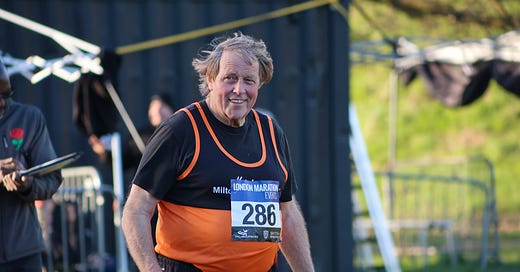OpenTrack Age Grade Factors and Capabilities Update
All the changes to make use of the latest World Masters Athletics age grade factors
Comparing performances is often easy in athletics. The simplicity of who crossed the line first, threw the furthest, or jumped the highest is one of the great things about the sport.
It’s not always so simple though. Two athletes, producing the same performance, but decades apart in age, are likely performing at differing ends of the performance spectrum, and that’s where age grades come in.
Distance runners will know age grading well, but for those less familiar, every performance can be given a score represented as a percentage, based on the age and sex of the athlete. Though not an exact science, the percentages can roughly be understood as follows:
100% - World record-level performance
90% - World class performance
80% - National level performance
70% - Regional/top end club-level performance
60% - Lower club-level performance
With additional factors for young athletes, as well as those over the age of 35, it’s easier than ever to compare performances on OpenTrack.
New masters age grading tables for 2023
Until now, we’ve used code matching Howard Grubb’s 2015 online calculator to work out age grades, putting together track and field factors from World Masters Athletics (WMA), and factors for many distances on the road from USATF, and for racewalks.
New WMA tables were approved in 2023, to add to their 2020 road factors, reflecting both improvements in absolute world records, and the reduced decrement in performance as athletes age, as more and more pursue masters athletics and redefine what is possible for older athletes. We’ve just updated our code to use these new factors.
Sharing age grades with the world
Turning on age grade display for your competition is available at the click of a button.
What if I’m hosting a non-standard event?
With our latest update, we’ve also added interpolation for unusual distances.
In the past, if you set up a 5.3 mile cross country race in OpenTrack (5.3MXC), you would get a zero age grade for everyone, as it’s not a standard event with known factors. Now, with some work behind the scenes, OpenTrack will look at the 5 mile and 10K events, which do have factors, and give you reasonable age grades.
Though scores might be a little harsh, as they assume a road race in perfect conditions rather than a muddy, hilly cross country, as everyone has run the same course, it’s easy to highlight the best performances by athletes both old and young.
How can I use age grades?
For every competition, we already list the five best age-graded and outright performances on the home page.
Looking at this year’s Boysen Memorial in Norway, you can quickly see the 800 metres was a really hot race, and that there were great performances from some 15- and 17-year-olds in the 200 and 5000.
This also helps statisticians - when looking at our results feed, they can quickly see the age grades of the best, 10th best, and 100th best performances. In the meeting above, the 100th best performance scored 88%, which is an incredibly high quality competition!
Making use of age-graded team scoring

In road and cross country races, there would traditionally be a prize for each 5- or 10-year age group, but it is basically impossible for clubs to have a full team in every age group.
If you want to motivate everyone, why not have a prize for the best 5 age-graded performances by each club? Then a 70-year-old can win big points for the team, even if everyone else is much younger. At the other end of the scale, a talented 10-year-old could score more points than 17- or 18-year-olds.
If you want help integrating age grading features into your competition, scoring athletes of all ages effortlessly, let us know.
As always, if you have any feedback, requests, or want help bringing your athletics into the 21st century, feel free to get in touch at info@opentrack.run.









